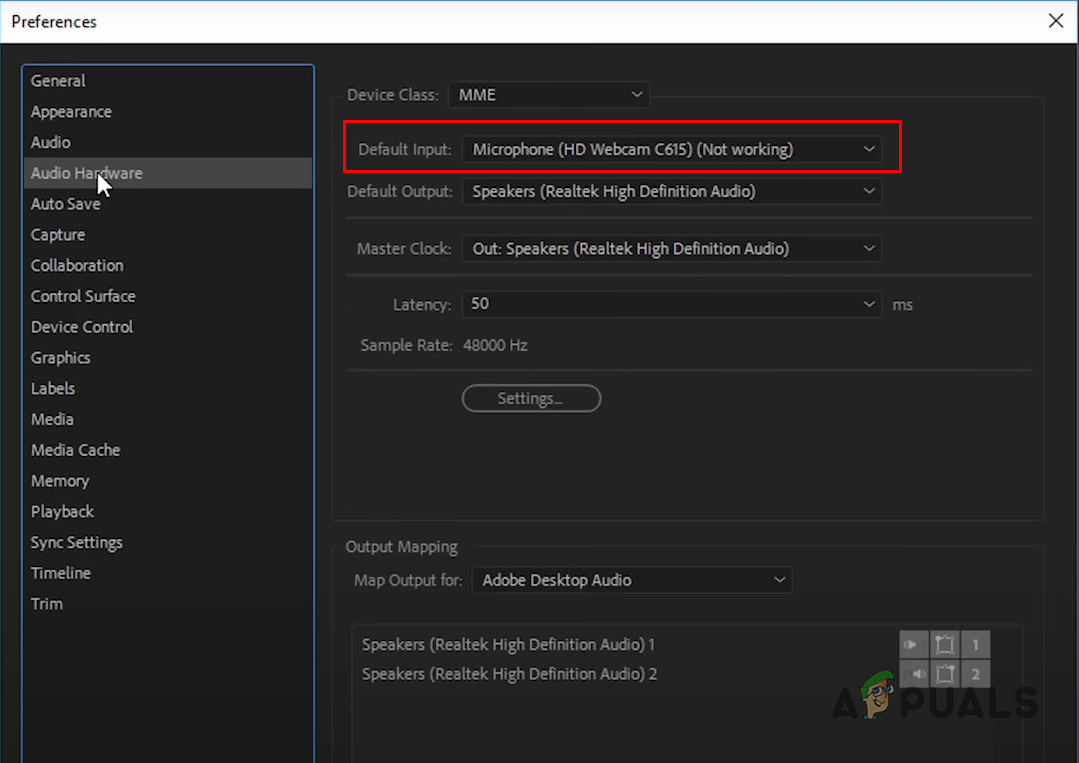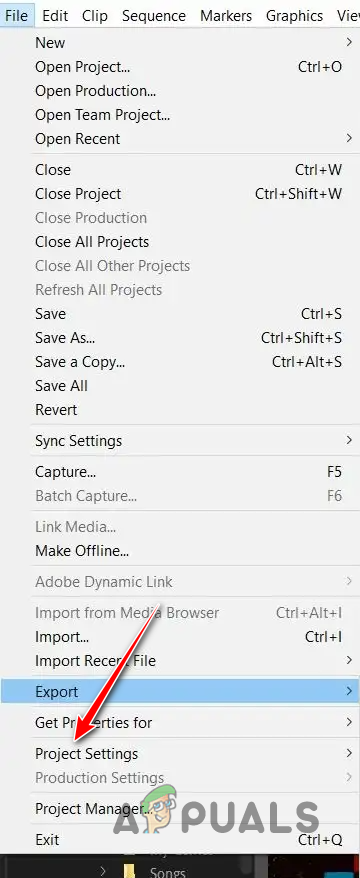How to prevent Adobe Premiere Pro from lagging?
Adobe Premiere Pro lagging issue during playback occurs often due to the playback quality of the project in the Preview Window. This is because of the amount of decoding that needs to be executed to play the project in a high-quality format.

Adobe Premiere ProAlternatively, if you encounter lag with Adobe Premiere Pro during general usage, the user preferences are usually the culprit. This can happen when the preferences file stored locally is damaged which results in stutters or occasional lag while using the application.
Thus, we are going to list down a number of methods that you can use on your computer to resolve the lagging with your Adobe Premiere Pro.
1. Check Image Sizes (if applicable)
The first thing that you should do when troubleshooting lagging with your Adobe Premiere Pro is to check the image sizes In your project if you’re using any. In some instances, the image sizes that you’re using in your project can affect the playback of your project, and thus cause it to lag.
This happens when the image sizes are bigger than the sequence or the project itself. As such, it is important to use image sizes respective to your needs and requirements.
With that in mind, go through the images that you’ve added to your project and see if they are too big. In case they are, reduce the size of the images and replace them in your project to overcome the problem. You will need to remove the imports of the old images from the project as well.
2. Lower Playback Resolution
If you’re using a high playback resolution on your Adobe Premiere Pro, playback lag is likely to occur. This is because of the decoding that occurs in the background to process your project. A higher playback resolution requires more decoding to be done, which can cause lag while using the program.
Therefore, it would be an obvious choice to lower the playback resolution on your project. This will reduce the amount of decoding required which can smoothen up the playback on less capable computers. Follow the instructions below to do this:
- To lower the playback resolution, click on the drop-down menu in the bottom-right corner of the Preview Window.
- From the menu, choose 1/2 or 1/4 and see if that makes any difference.

Changing Playback Resolution - In addition to that, click on the wrench icon next to it and use the menu to disable the High Quality Playback option.

Disabling High Quality Playback
3. Optimize Rendering for Performance
Adobe Premiere Pro comes with a setting that allows the program to optimize itself for memory usage or performance. With the memory usage options selected, the app tries to optimize the overall memory consumption, which can sometimes lead to laggy performance.
In such an instance you will have to change the rendering optimization of the app to performance. This will allow the program to use any resources without any optimization restraint, enabling it to provide a better experience overall. To change the rendering optimization, follow the instructions below:
- First, open the Preferences window via the Edit menu.

Opening Preferences Window - After that, switch to the Memory tab.
- There, use the Optimize rendering for menu to select Performance.

Optimizing Rendering for Performance
4. Turn off Hardware Accelerated Decoding
Premiere Pro comes with a hardware-accelerated decoding option that can be utilized when you’re working with H.264/AVC or HEVC media codec. This feature improves the overall performance of the playback in your project when working with the mentioned media formats.
However, in some cases, it can also cause laggy behaviour, especially if you’re not using the expected formats. As such, you will need to disable hardware-accelerated decoding in your Preferences window to mitigate the lag. Follow the instructions below to do this:
- First, open the Preferences window from the Edit drop-down menu.

Opening Preferences Window - After that, navigate to the Media tab on the Preferences window.
- Then, untick the Enable hardware accelerated decoding option.

Disabling Hardware Accelerated Decoding - Click OK and restart Adobe Premiere Pro.
- See if the lag is still there.
5. Change Default Audio Input
While this may sound trivial, the default audio input in Adobe Premiere Pro can also cause lag when you are using the application. This usually happens due to the audio drivers or the interference of webcam drivers such as EpocCam.
To resolve this anomaly, you will need to change the default audio input in your Premiere Pro preferences. This can help with playback lagging a lot in some cases. Follow the instructions below to do this:
- Open the Preferences window in Adobe Premiere Pro.

Opening Preferences Window - On the Preferences window, navigate to the Audio Hardware tab.
- Then, use the Default Input menu and select the None option.

Changing Default Audio Input - Once you do that, click OK. See if the playback is still lagging.
6. Turn on GPU Acceleration
Adobe Premiere Pro can take advantage of the GPU on your computer to improve the performance of the program by distributing the load. By default, most of the processing is done by the CPU while the GPU only assists in some features or tasks.
However, you can use the GPU Acceleration feature to force the GPU to help with the overall processing as well. The GPU accelerated renderer will process a number of things, from rendering the accelerated effects to image processing, color space conversions, and more.
If the GPU Acceleration option is greyed out for you in the project settings window, you will have to update your graphics drivers to the latest version available. With that said, follow the instructions below to enable GPU acceleration.
- First, open the Project Settings window via File > Project Settings.

Opening Project Settings - After that, on the General tab, choose the Mercury Playback Engine GPU Acceleration option from the Renderer menu.

Enabling GPU Acceleration - Once you do that, check if the issue still persists.
7. Delete Media Cache
In some scenarios, the old media cache files stored by Adobe Premiere Pro can be the culprit and cause the program to lag. The media cache is loaded by Adobe Premiere Pro on every startup to provide quick access to cached media files.
However, when the media cash grows too large, it can degrade the performance of the application and cause it to lag. In such an instance, you will have to purge the media cache files in your preferences window to fix the issue. To do this, follow the instructions below.
- Start by opening the Preferences window from the Edit menu.

Opening Preferences Window - After that, navigate to the Media Cache tab.
- Then, click the Delete unused option next to Delete unused media cache files.

Deleting Media Cache - Once the cache has been deleted, restart the program and see if there is any difference.
8. Reset Premiere Pro Preferences
Premiere Pro comes with a lot of customization that you can implement by setting your own preferences. These preferences are loaded every time you open the application to suit your workflow. However, in some cases, these preferences can slow down the application over time, causing lags, stutters and more.
In such a scenario, you will have to reset your Premiere Pro preferences. Once you do that, the application will revert to the factory default settings and you will have to start over. Resetting the preferences of your Premiere Pro app can often help in fixing performance issues.
Follow the instructions below to reset the references of Adobe Premiere Pro:
- First, shut down Premiere Pro completely.
- Follow this up by opening the File Explorer window on your computer.

Opening File Explorer - After that, navigate to the Documents folder.

Navigating to the Documents Folder - Then, locate the Adobe folder and navigate to the following path:
Adobe > Premiere Pro > <version> > Profile-profilename - Inside your profile folder, move the preferences folder to any other location, such as your desktop.
- Once you do that, open Premiere Pro. The program will now revert to the factory default settings. See if the issue is still there.
You should be able to subside the Adobe Premiere Pro lagging issue with the methods provided above. Preventing lags in Premiere Pro can require several steps, in some scenarios. Ensure that your app is optimized correctly and your overall workflow is efficient to prevent the program from lagging in the future.
Is Adobe Premiere Pro still lagging?
If Adobe Premiere Pro is still lagging after implementing the methods above, you will have to contact the support team for Premiere Pro from Adobe on their official website. There, you can tell them about your project configuration and your hardware setup so that they can help resolve the issue for you in a detailed manner.
 Reviewed by
Reviewed by 




